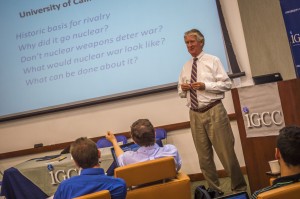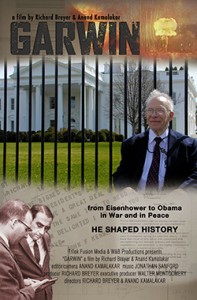This past summer, I had the opportunity to attend the Public Policy and Nuclear Threats (PPNT) Boot Camp at the University of California San Diego. The Institute on Global Conflict and Cooperation (ICGG) at UC San Diego and the Nuclear Science and Security Consortium (NSSC) offer this opportunity to graduate students and others early in their career. The PPNT Boot Camp affords participants the chance to engage in true cross-disciplinary collaboration, as students in the workshop come from a variety of policy and technical backgrounds.
I am currently a second year graduate student in chemistry at the National Superconducting Cyclotron Laboratory (NSCL) at Michigan State University (MSU) and best described as a technical student. At the NSCL we study fundamental nuclear physics, so I headed into to the PPNT with a fairly unique perspective. Not only is my research not focused directly on nuclear security, but I also did not have a lot of policy experience. The opportunity to learn more about nuclear security policy made the PPNT a particularly informative and eye-opening experience for me. The phrase “drinking from a fire hose” comes to mind!
The program lasted 10 days, each day filled to the brim with lectures and events. All of the participants roomed together in UCSD housing and we ate our meals together on campus. For that week and a half, all we did was eat, sleep, and breathe nuclear policy! Linton Brooks and Bethany Goldblum, who organized the course, brought in many engaging and fascinating speakers (themselves included!), so that light, easy days were just not an option. The lecturers were experts from all areas of nuclear science and policy– political scientists, nuclear scientists, and public policy practitioners. Speakers shared a lot of useful and important information about the history and current state of nuclear policy around the world. Many of the speakers delved deeply into the details of the Nuclear Non-Proliferation Treaty (NPT) and helped us understand the crucial treaty most central to international nuclear policy. There were also many technical talks, and to be honest, it was a relief for me when an equation showed up on a slide every once in a while!

Not only did the speakers share their expertise with us, but many took the time to talk about their careers and what skills are required to make an impact in nuclear policy. I had not even heard of many of their career paths, and would not have even thought that they were an option prior to the PPNT Boot Camp. After every session, the speakers joined us for a meal or drinks and let us pick their brains about what it is really like to make a career in this community.
The speakers were not the only notable people there, however. I was very impressed with the quality of the participants in the program. Some were just starting grad school, while others had a few years of real world experience under their belts, and their backgrounds were incredibly varied– participants included nuclear engineers, radiochemists, political scientists, and historians. Each person came with their own unique background, but we all shared a passion for understanding how we could be a part of improving our nuclear future. I look forward to seeing these guys and girls again throughout my career! Don’t worry, despite their impressive qualifications, this group still had so much fun!
The Nuclear Policy Working Group from UC Berkeley, which organized our daily activities, made sure that even in those few free moments we had there was never a dull moment! One night we played a highly competitive and intense game of Nuclear Trivia. I have to make a proud shout out to my teammates for pulling off the win after our very rocky start! Another evening we held our own showing of Pandora’s Promise and had a very rewarding discussion about the future of nuclear energy.

My favorite event of all was a film screening held on the UCSD campus of a documentary on the life of Richard Garwin, a scientist instrumental in the Manhattan Project. Garwin himself even came to the showing that night and after the film he took time to answer some questions. Dr. Garwin gave wonderful advice to the young people in the room (PPNT made up a large portion of that age range in the crowd!), advising us to be active participants in the events in our country, to remain engaged, and to use our knowledge and skills to make the world a better place. The film depicted many scenes of Dr. Garwin meeting in Washington offices with policymakers. It’s truly incredible that we got to meet someone who has had such a profound impact on the world’s nuclear history, and it’s also very inspiring to know that a remarkable scientist like Dr. Garwin is still engaged in our society. I hope that I can someday be as active and involved as he is and live up to his advice.
The PPNT program was an absolutely wonderful experience. I came home excited to continue my journey into this fascinating intersection of science and policy. The PPNT program demonstrated to me what other posts in this blog have mentioned: neither science nor policy can survive independently; they rely on each other. This program opened my eyes to the many ways in which I can use my future and my career to try to make a difference in nuclear policy. It was a fantastic opportunity and I cannot not wait to see where the lessons learned in those ten days take me and my classmates as our careers progress.